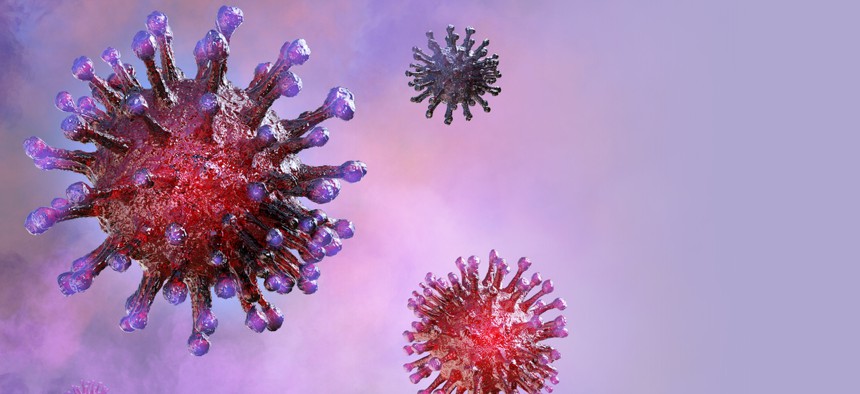The Military’s Latest Wearables Can Detect Illness Two Days Before You Get Sick

Corona Borealis Studio/Shutterstock.com
Some 400 troops are testing the devices, trained on nearly a quarter million cases to detect COVID and a whole lot more.
Some troops in the U.S. military are wearing a watch and ring kit that can alert them and their command if they’re going to get sick in the next day or two. It’s part of a new system that the Defense Innovation Unit, or DIU, has built with Philips Healthcare and the Defense Threat Reduction Agency, or DTRA.
The watch and ring — by Garmin and Oura, respectively — are commercially available; they detect subtle biometric indicators, like slight changes in skin temperature. But a new algorithm, trained on Philips’ massive cache of patient bedside data, can analyze the data and predict whether the wearer will soon become ill from any of a wide variety of diseases, including COVID-19.
Called Rapid Analysis of Threat Exposure, or RATE, the system can’t tell you exactly what you have, but can tell you the likelihood, on a scale of 1 to 100, that a sick day is ahead.
“Originally, this wasn’t designed for COVID-19, but the algorithm was trained against some SARS variants, of which COVID-19 is one,” said Dr. Christian Whitchurch, who runs the human systems portfolio at DIU. “We trained this algorithm on something like a quarter-million patient records. These are folks that went into the hospital for an elective surgery…and then became unwell.”
The researchers identified six markers that allowed the Philips-made algorithm to provide a 48-hour heads-up, before the wearer even feels sick in most instances.
“We are pivoting this hospital-developed model into the context of a warfighter using commercially available wearable tech,” said Whitchurch.
In June, DIU and DTRA began giving the kits to about 400 people.. “Within two weeks of us going live we had our first successful COVID-19 detect” — that is, an indication that the wearer was unwell, which led to a further diagnostic test the revealed COVID-19, he said. “That was amazing.”
The program is now expanding to some 5,000 participants, including across the Navy, Veteran Affairs, West Point cadets, and “other Department of Defense entities,” according to a press release.
DIU aims to roll the kits out to “tier one operational cohorts” — units in which absenteeism can have a big effect on their missions, said Air Force Lt. Col. Jeffrey "Mach" Schneider, who does portfolio support at DIU.
The recent saga of the Navy aircraft carrier sidelined by COVID shows how a highly contagious illness can really disrupt operations.
“You get to a point where your readiness goes down considerably. The units that we’re dealing with now are these tier-one units that really cannot accept any degradation in mission readiness,” Schneider said.
It’s the sort of data that, when combined with other information like location, perhaps via contact tracing, can help healthcare providers predict COVID-19 rates and transmissions.
“We are working with folks who are doing the contact tracing,” Schneider said. “It’s the healthcare professional who has the context. We’re really reliant on them for that contextual information. That’s the person who is going to know, ‘Airmen Snuffy has a high score. What else is going on? Have they been in a high risk area?’”
The system doesn’t necessarily alert a commanding officer. No personal information is shared with individuals that aren’t supposed to have it, in keeping with Institutional Review Board protocols.
“The individual obviously knows their score” when they log in, said Schneider. “On the other side, for the command level, they see just a bunch of letters and numbers that are attached to a unique identifier for each individual. There’s a person in each of these cohorts that has the master key, a person with training in human protocol that’s allowed to call up that individual.”
Although the team isn’t currently seeking FDA approval of the device for larger consumer populations, they say that it’s absolutely the sort of thing that will have usefulness, for the military at least, long after the COVID-19 threat has passed.






